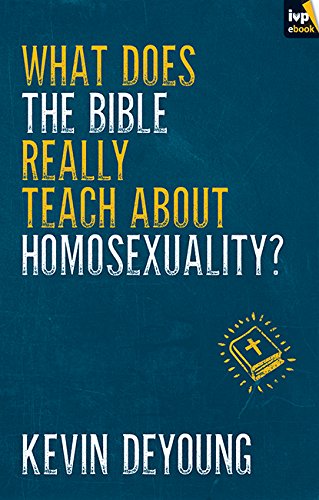Booth Encounter at a College Event
During an outreach at a tech college, our church booth was placed right across from an LGBT+ advocacy booth. After some awkward glances throughout the event, two women from their booth came over when things got quiet. This gave me a chance to share biblical truth with grace, while still holding to my values.
Ready to Answer?
Can you respond when asked about your views on sexual issues? Are you able to share what you know while mixing solid facts with grace and truth?
A Helpful Book

Kevin DeYoung’s book, What Does the Bible Really Teach about Homosexuality?, gives clear and easy-to-read guidance. It’s a great resource to review periodically, so you’re prepared to answer tough questions. Every pastor should keep this book within reach.
The Bible’s Big Picture
DeYoung sets the scene by tracing God’s story from creation to its final goal. God wants to restore the perfect bond with people that existed in the Garden. He offers salvation through Christ, which calls us to live in keeping with this gift. Any drift from this path is cause for concern, so we need to grasp what the Bible says about this topic. DeYoung tackles it with care, clarity, and humility, defending God’s design for marriage to help those who agree, argue, or aren’t sure.
The Creation Story
The author explains the standard view of creation while looking at new takes on it. These new views, mainly about Eve’s role and her bond with Adam, try to make space for gay relationships. But these views don’t hold up against the stronger proof for the classic reading, such as how God made woman and the role of having children in marriage.
The Story of Sodom
When talking about Sodom and Gomorrah, DeYoung claims their sin was sexual. While this fits with what we read in Ezekiel, his case could be stronger. Using phrases like “it is more likely” and “it would seem” makes his point weaker (DeYoung, 38). The case would be better if he showed the path from pride to false worship to sin, and looked at how sexual sins—like “strange flesh”—might include more than just gay acts. Still, despite hints of his Reformed views, DeYoung gives a good look at what the Bible says about this issue for all kinds of readers.
Finding the Right Balance
The best chapter is “It’s Not Fair,” where DeYoung mixes care with firm truth. Church leaders need to think deeply about current issues, and this chapter is an excellent model for talking about hard topics with both care and truth. Beyond just gay issues, DeYoung looks at bigger themes like making family an idol and the belief that we all deserve sexual joy. When facing tough issues, leaders must think about how their views affect various people. This builds on firm Bible truths, unlike quick, off-the-cuff remarks that can cause harm.
What the Bible Says
Romans 1 shows how sin leads from false worship to sexual sins. Our revolt against God goes back to the start, which helps explain the link between sexual sins and hiding from truth. DeYoung adds depth with word studies from New Testament sin lists. The most useful part deals with common claims against the Bible’s stance. Whether critics say the Bible barely mentions gay acts or misuses certain kinds of them, the proof clearly shows it as a sin. In the end, the author makes a strong case that the Bible is both clear and direct about gay acts, calling them wrong and against God’s design.
